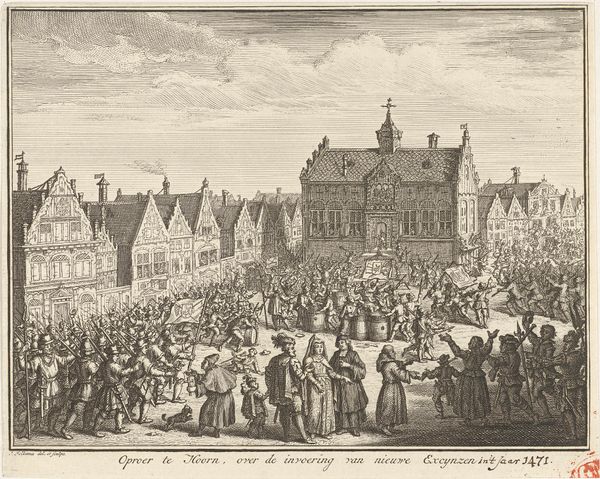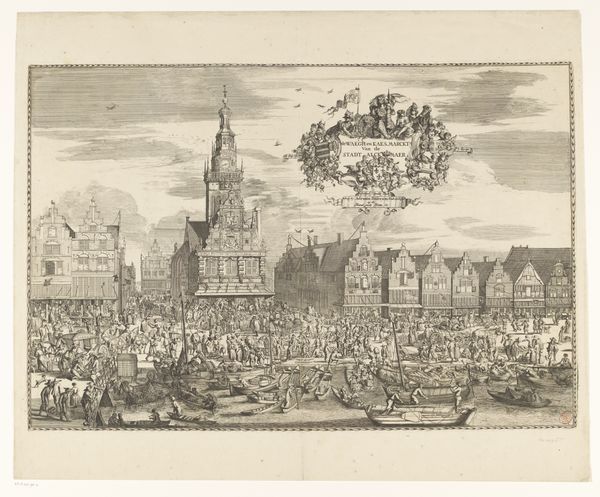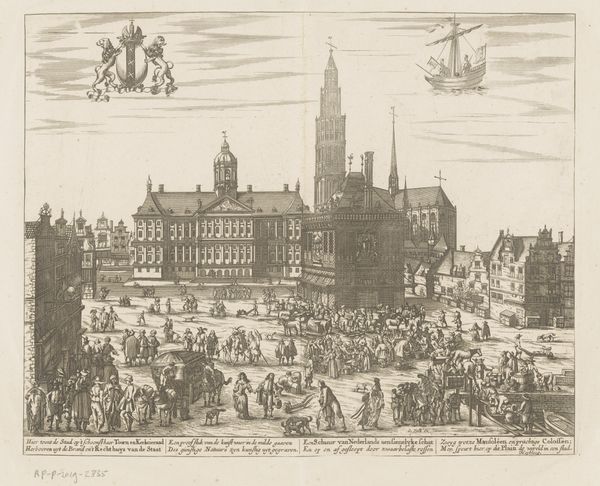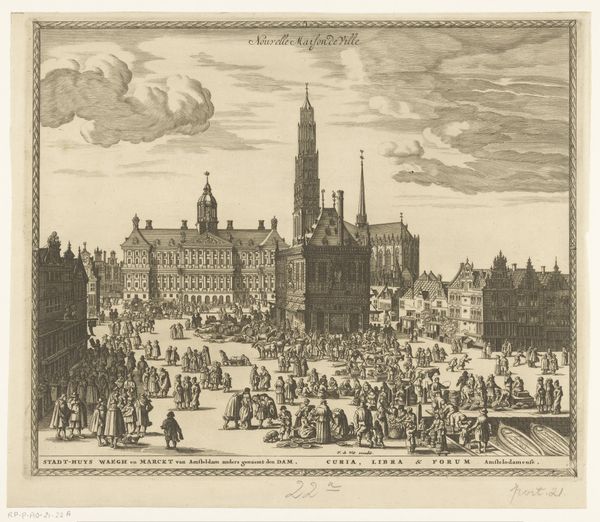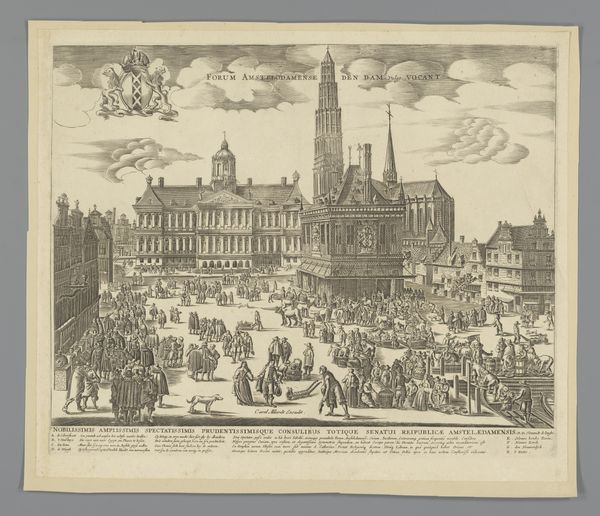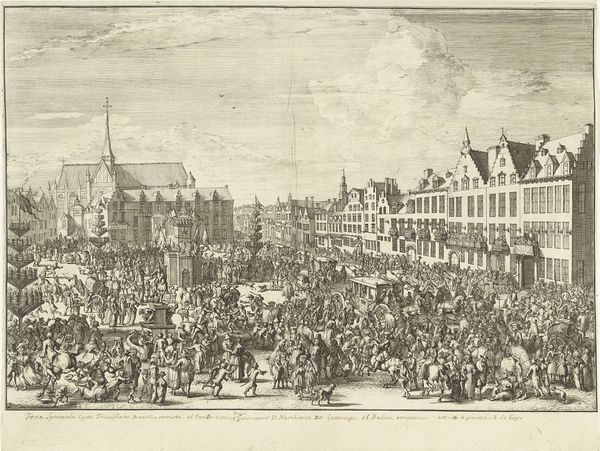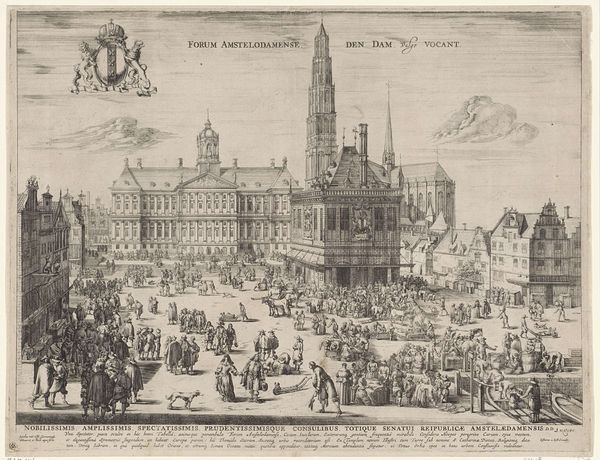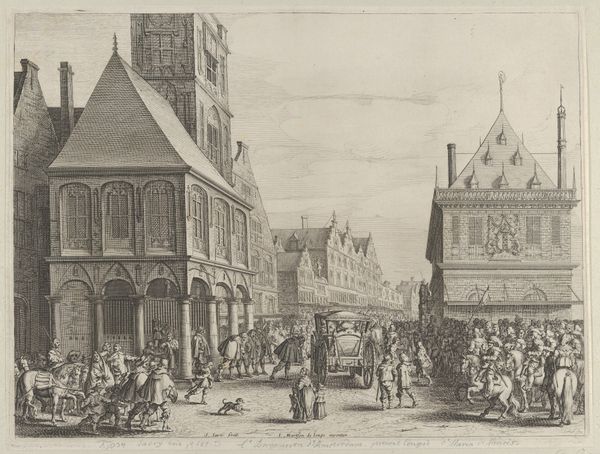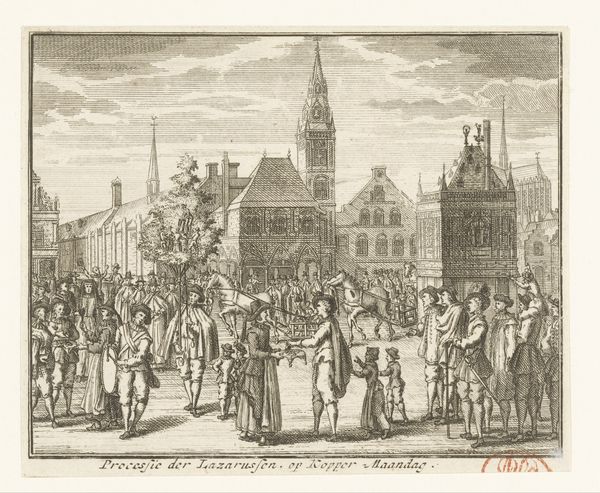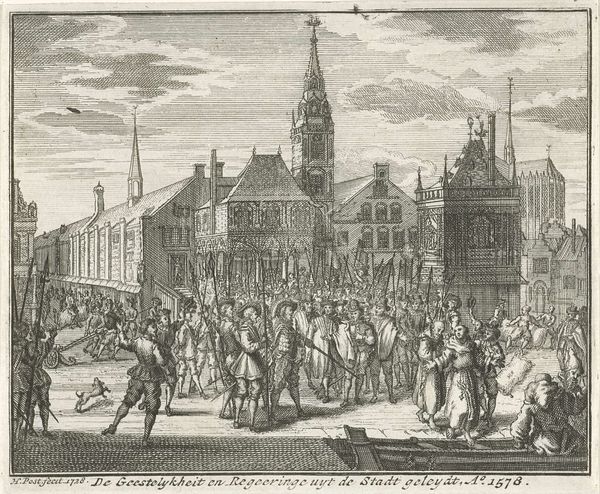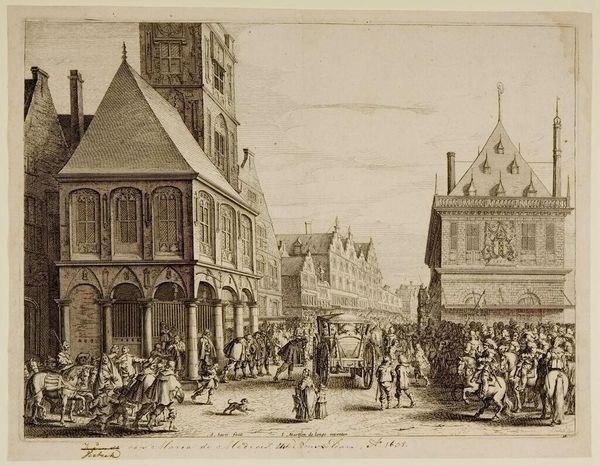
Dimensions: height 190 mm, width 255 mm
Copyright: Rijks Museum: Open Domain
This etching, made by Simon Fokke in the 18th century, depicts Koppermaandag met leprozenoptocht te Amsterdam in 1604. It's made using the intaglio printmaking process, where lines are incised into a metal plate, which then holds ink to transfer the image onto paper. Fokke's technique allowed for detailed linework, capturing the scene's architectural elements and numerous figures. The print's monochromatic palette emphasizes texture and form, guiding the viewer's eye through the bustling marketplace. The social significance of this piece lies in its depiction of a lepers' parade on Koppermaandag, or Copper Monday, traditionally the first Monday after Twelfth Night. This event was a social welfare activity, where lepers collected alms, and the print serves as a historical record of this practice in Amsterdam. While Fokke was a skilled artist, the print also subtly reveals the hierarchies of labor and class within the city. The lepers, marginalized by society, are shown seeking charity, while merchants and spectators look on. The very act of etching and printing could be seen as a commercial enterprise in itself, with prints sold as commodities to a growing urban audience.
Comments
No comments
Be the first to comment and join the conversation on the ultimate creative platform.
